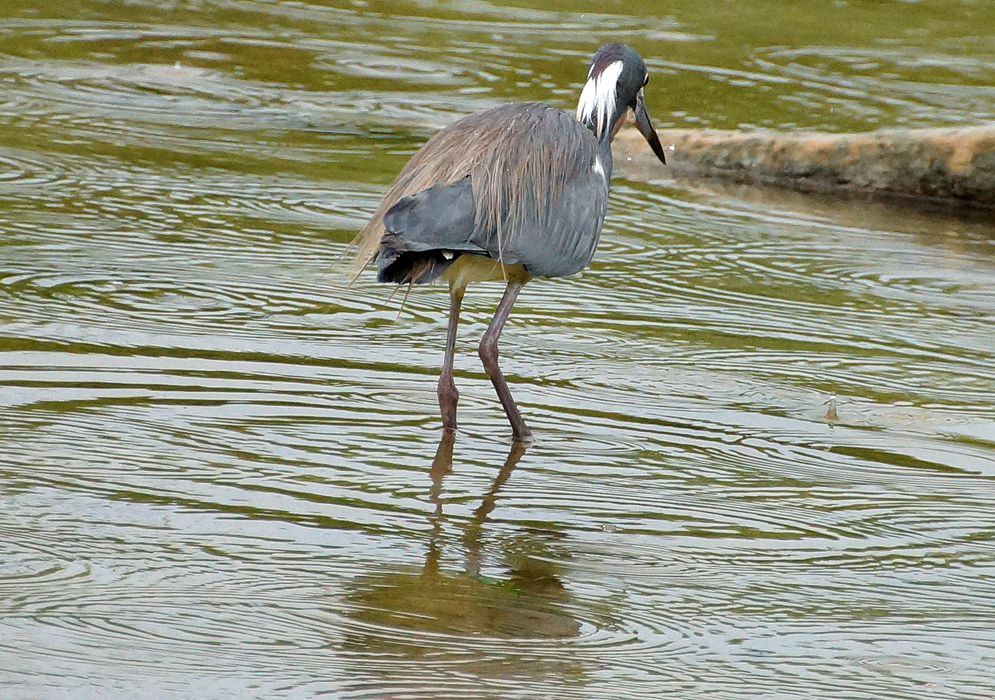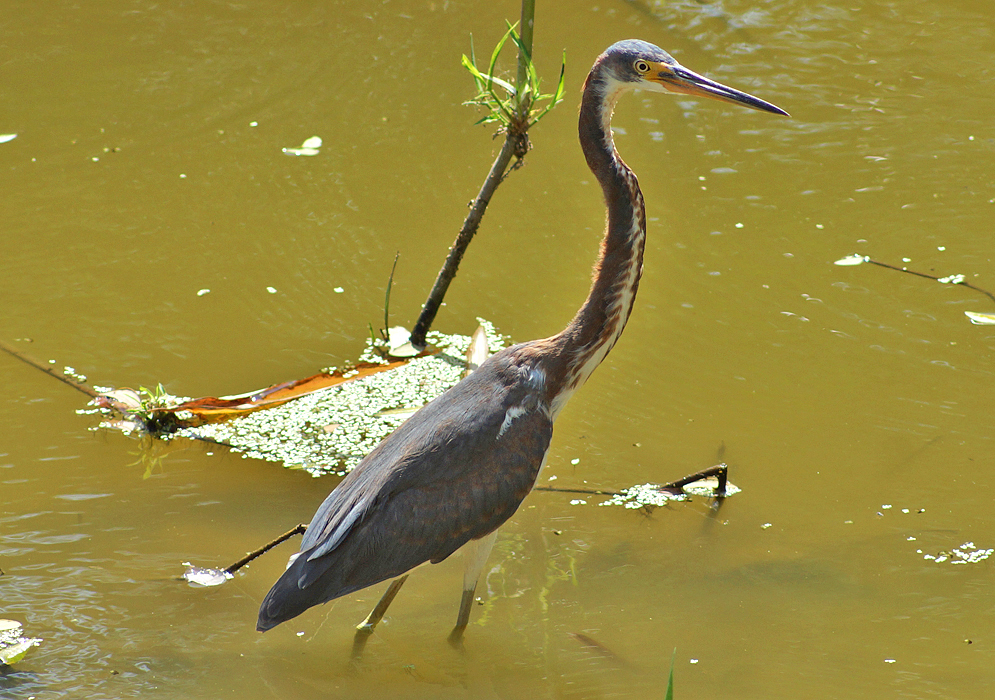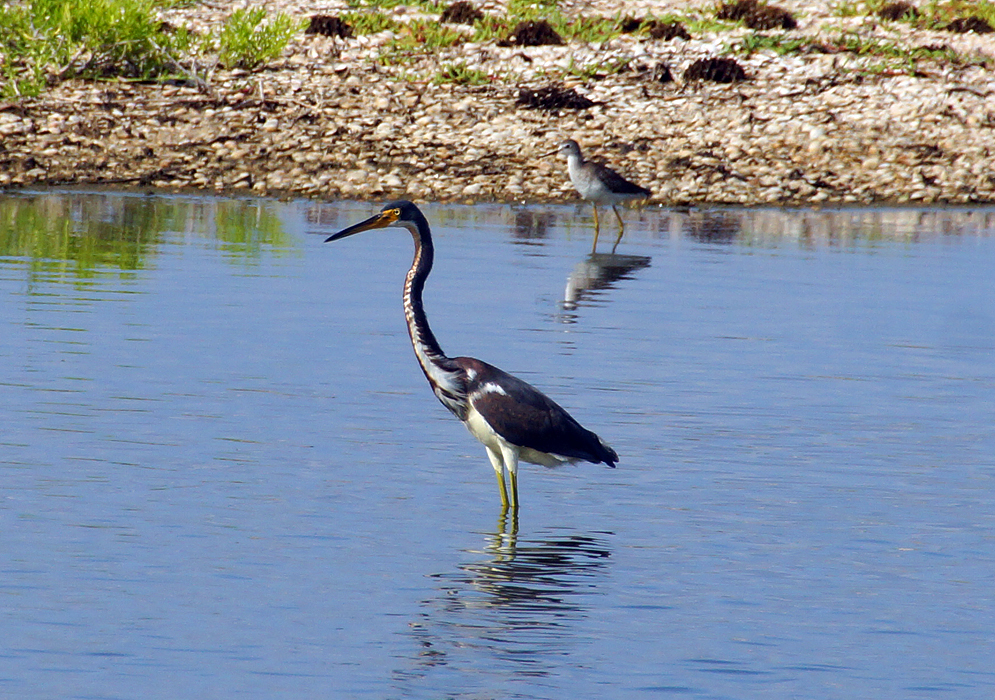This post has 11 Simple Fields-fields attached. Show fields.

The Tricolored Heron, is native to the coastal regions of the Americas. They are commonly seen along the coasts of Maine through Texas and both coasts of Mexico. Their habitat primarily includes shallow marshes and shores, such as mudflats, mangrove swamps, and bays, where they often prefer mangroves, freshwater swamps, and river outskirts. Interestingly, colonies of Tricolored Herons have also been found in atypical habitats like dry ground and high altitudes, suggesting adaptability to various environments. Tricolored Herons are characterized by their long legs and neck, typical of herons and egrets. The species exhibits sexual dimorphism in size, with males weighing about 415 grams and females approximately 334 grams. They possess a distinctive S-curved neck both in flight and at rest, and a long, pointed bill that changes color seasonally – yellow with a black tip in the non-breeding season, turning blue during the breeding season. Their underside and neck are white, a trait unique to this species, providing excellent camouflage in their natural habitat. Juveniles display different coloration, with a rich chestnut head, neck, and feathering on a blue-gray back, which gradually transforms as they mature. The male Tricolored Heron selects the nesting site before mating. Nest construction is a joint effort, using sticks placed on a bed of reeds or in a tree. The female lays around 3-4 bluish eggs per clutch, with one clutch annually. Nesting typically begins in early to mid-March, timed with the receding water levels in their habitat, which helps concentrate prey and thus benefits the feeding of the nestlings. Interestingly, chicks hatch over several days, providing the first-hatched chick a foraging and survival advantage over its siblings. Chicks are ready to fly at about 35 days old and soon become independent, as adults are mostly solitary. While Tricolored Herons were once the most numerous herons in North America, their population has declined since the arrival of the Cattle Egret in the 1950s. Despite this decline, they remain common. The species is currently listed as "Least Concern" by the IUCN. Photographed in northern Colombia.





